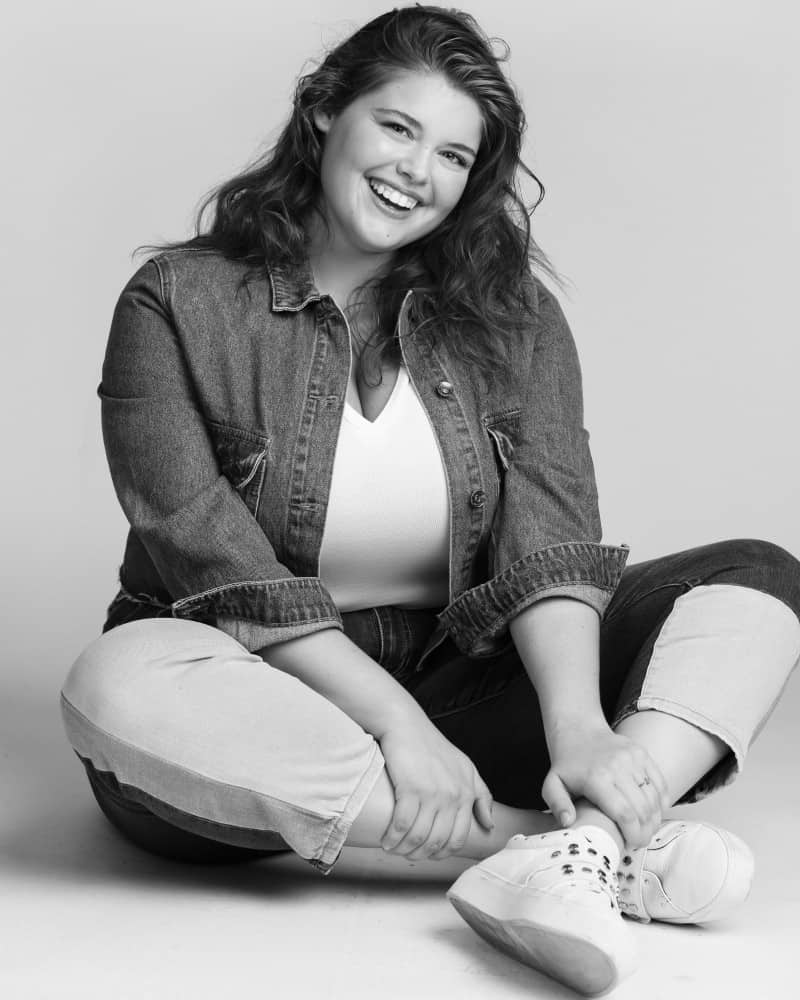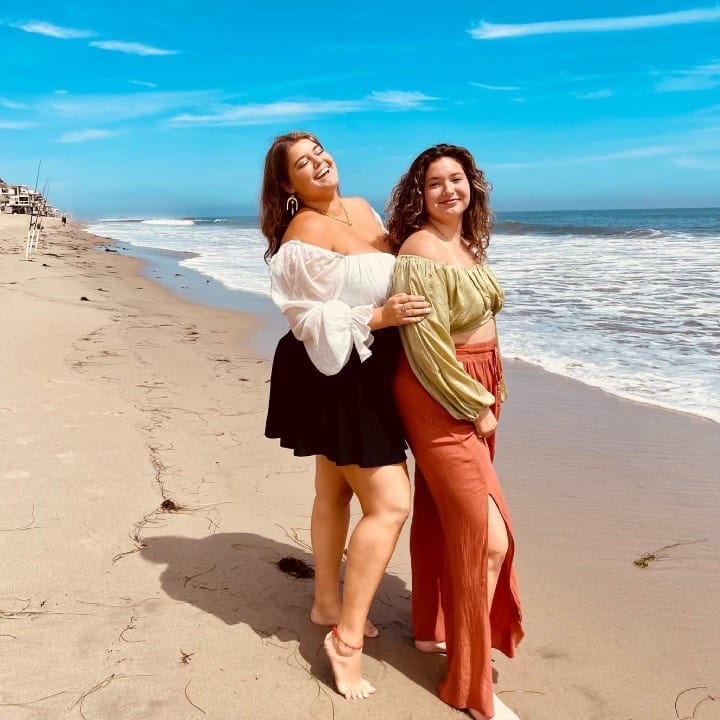
Erica Jean made history in August 2015 at age 18 when she became the first plus-size model to be featured on the cover of “Women’s Running” magazine. After learning she has a BRCA2 gene mutation and undergoing a preventive mastectomy, she’s using her platform to encourage others to be aware of their breast health and their risk of developing breast cancer. This is her story in her own words.
I never thought the risk of breast cancer would be something I would have to take seriously. At least not now, at 25. However, the year 2022 changed my perspective. My dad was diagnosed with prostate cancer and both of his sisters were diagnosed with breast cancer. All three of them had a BRCA gene mutation, so my sister, cousins and I all were encouraged to get genetic testing as well.
I met with a hematologist and the waiting game began. It took two or three weeks for the results to come back, and I learned I carried the mutation, as well. My sister, who is 20, tested negative, and honestly, I was just so thankful that she didn’t have the mutation. She’s my best friend and is in college and I didn’t want her to have to deal with that mental load.
The information thrown at me was overwhelming, but I knew I was strong and would be able to handle whatever this meant. The hematologist told me that since breast cancer was so pervasive in my family, I was looking at the higher end of the odds of developing breast cancer. I had two options: move forward with a preventive mastectomy with DIEP flap reconstruction or come in for scans every six months to monitor for any evidence of cancer.
I’m someone who likes to have all the information in front of me and running through the numbers was overwhelming. It seemed like everything varied so much, but once I felt like I had a good grasp on things, I decided that the bilateral mastectomy was what best reflected my journey. I didn’t want to be watching and waiting. I wanted to take action and do something about it, and that is when I started talking to general and plastic surgeons.

During one of the meetings with my plastic surgeon, he explained how they were going to take skin from the DIEP flap to basically recreate the round shape of nipples. As he was telling me about this step and how they could make them look like nipples after my recovery, I stopped him and asked, “Why do they have to be circles?” I think the question startled him. He said, “Well, they don’t, but that’s just what we’ve always done. Either people don’t want nipples at all, or they go with the standard circle. I’ve never had anyone ask what else I can do.” I asked for hearts. If I am going to have artificial breasts, why make it look natural? I wanted something that spoke directly to who I am. I’m a little bit unique and I like to be different, so I figured little hearts would be cute.
My mastectomy was scheduled for early October, so I had some time to prepare and research what I would need to do before and after surgery – what soaps I would need to use, what supplies I would need post-op, what exercises would be helpful to my healing, etc. I had a lot of anxiety beforehand, but I was able to work through those fears with my therapist through exposure therapy.
The surgery lasted about 12 hours and I spent four days in the hospital, but I am recovering well. The biggest issue I’ve faced is that I’ve not been patient with the healing process. I just kind of expected my body to bounce back like it was before. Now there are scars in places I didn’t have them and there is still some swelling; there’s still some healing to be done. I’ve had to learn a lot of patience for my body, but I’ve also seen the amount of strength I am filled with and the resiliency my body is capable of. To be able to watch my body handle the surgery, the medication, and the changes and come out the other side and still be able to function in daily life, is a miracle. There are still days that I look in the mirror and think, “that’s different” or “that’s interesting,” but I am happy with how my body looks, and I am grateful for everything it’s been able to do for me.
My journey isn’t over. While I won’t need mammograms, I’ll still get regular blood tests to check my white and red blood cell counts. Because of my BRCA2 gene mutation, I’ll need to start screening for ovarian cancer when I am in my early 30s, but since I have no family history of it, my risk isn’t quite as high as it was for breast cancer.
I’ve put my modeling career on hold for now, but I’ve been able to return to Instagram and TikTok, where I’ve openly shared my journey with my followers. I’m blessed to have this platform to share information on how important it is to know your family history, get regular screenings and know if something is off. Being able to inspire others through my journey is something I do not take for granted, and if I can help just one person feel confident or inspired to take control of their health, then it’s worth it.
Learn more about breast cancer risk.
Statements and opinions expressed are that of the individual and do not express the views or opinions of Susan G. Komen. This information is being provided for educational purposes only and is not to be construed as medical advice. Persons with breast cancer should consult their healthcare provider with specific questions or concerns about their treatment.



